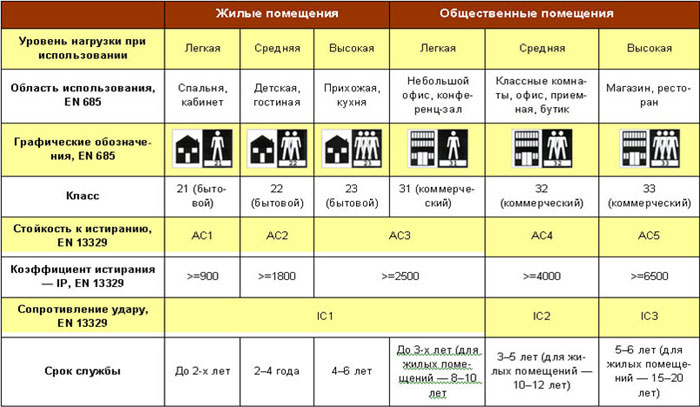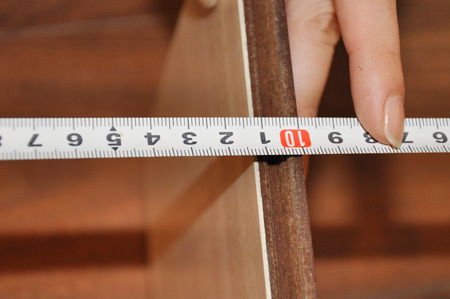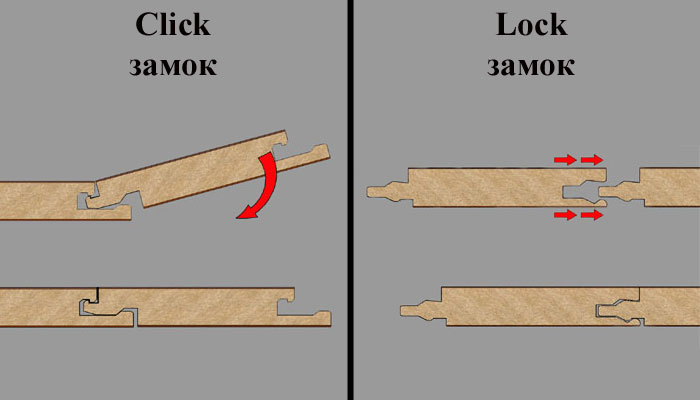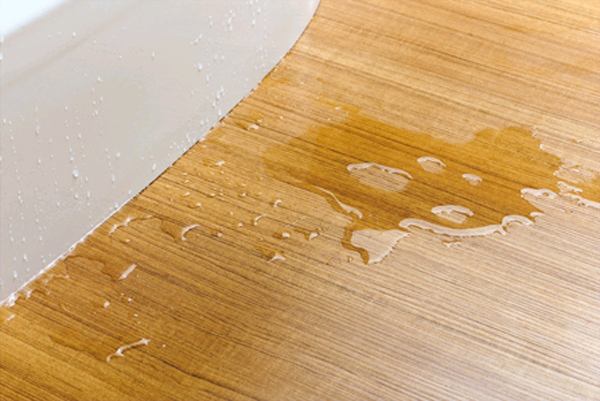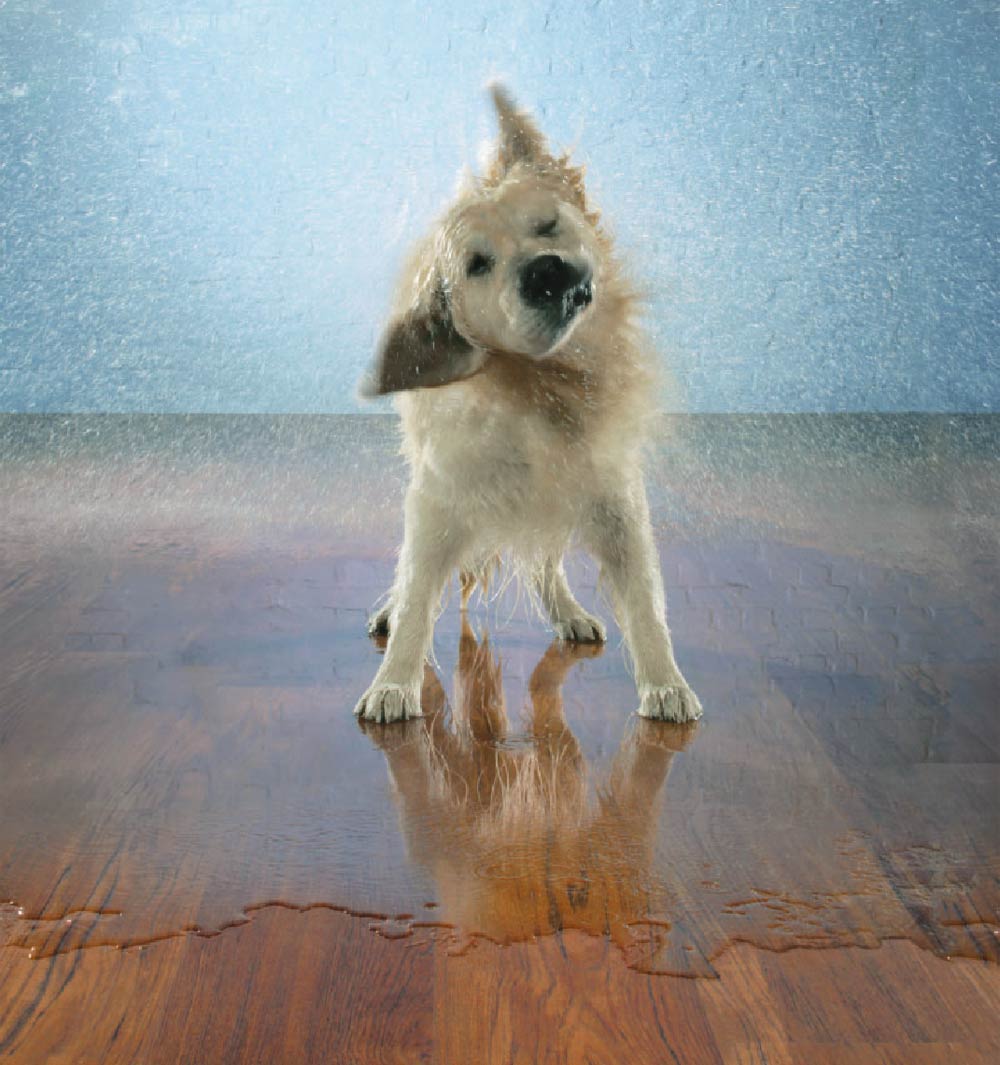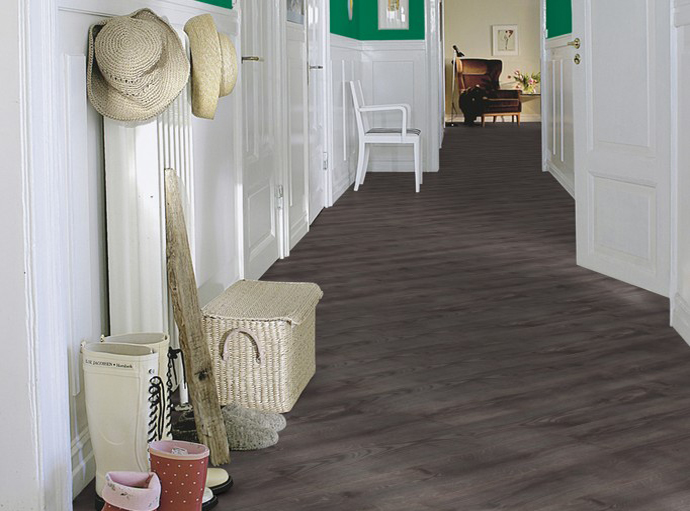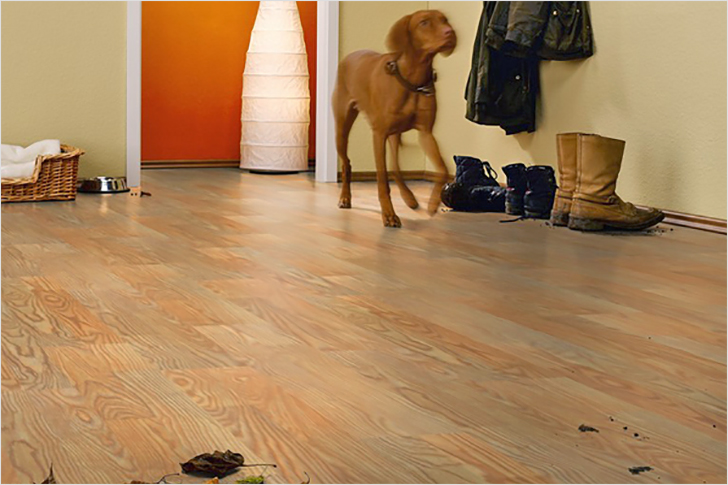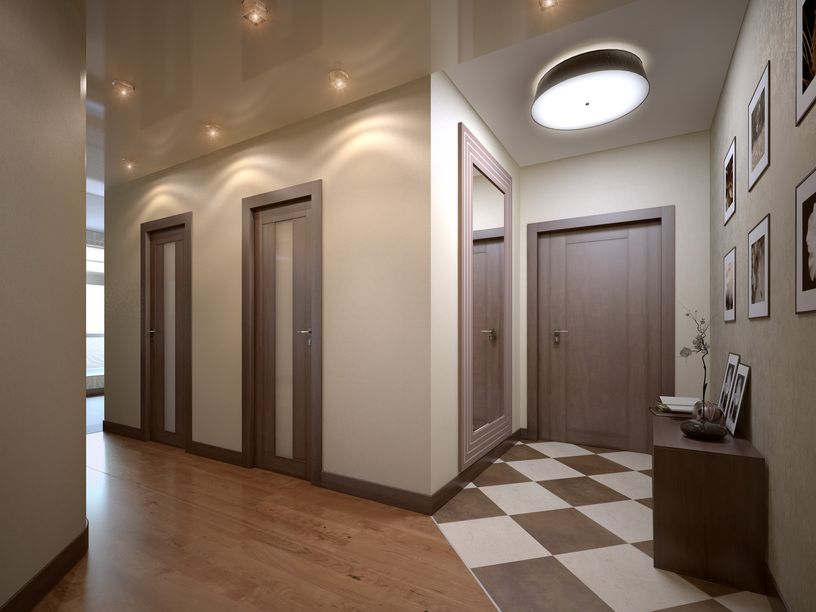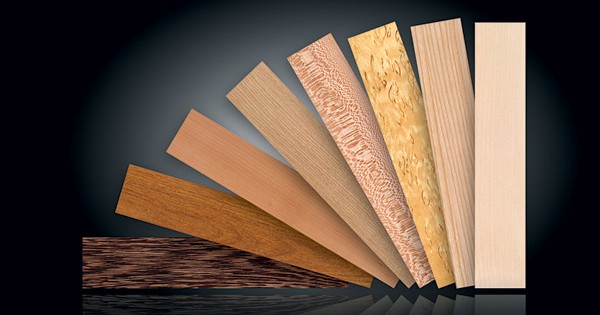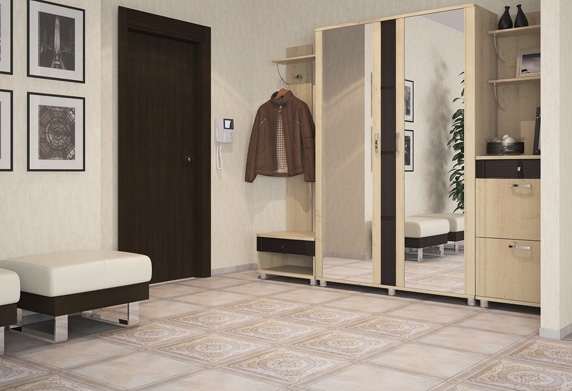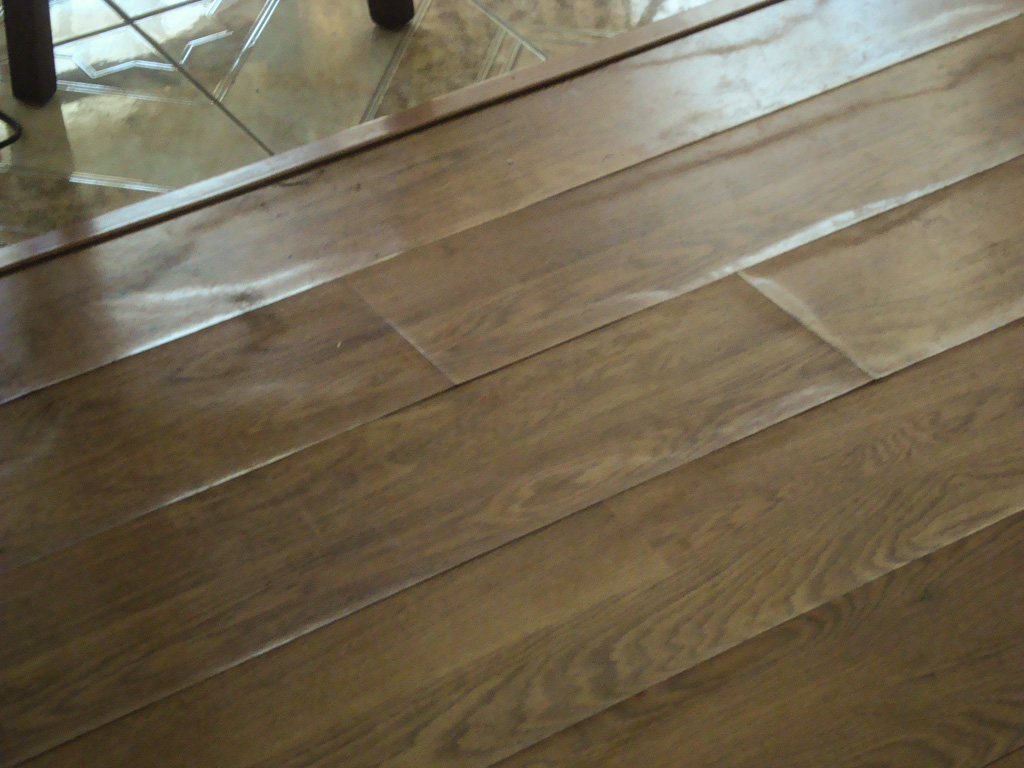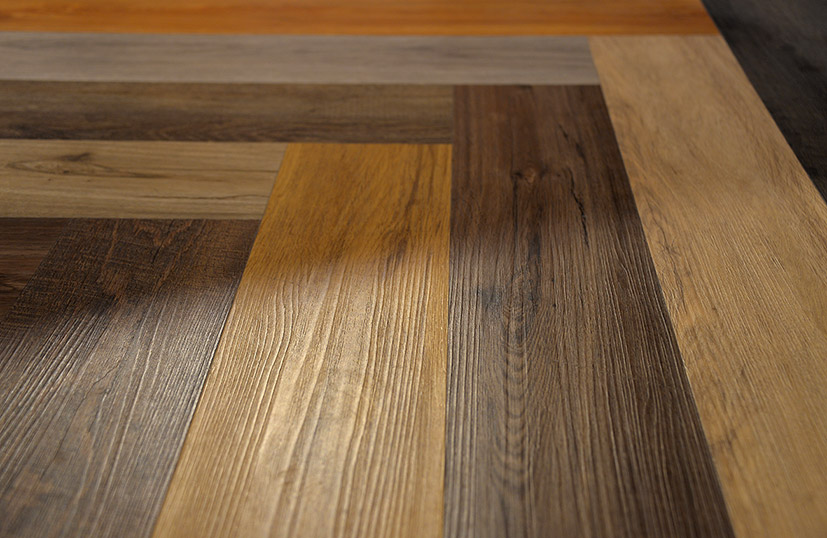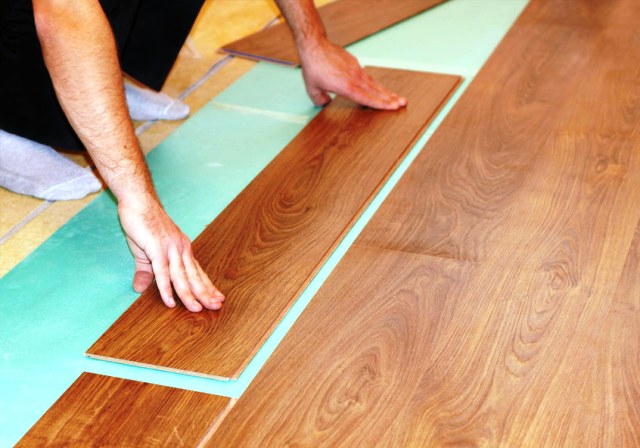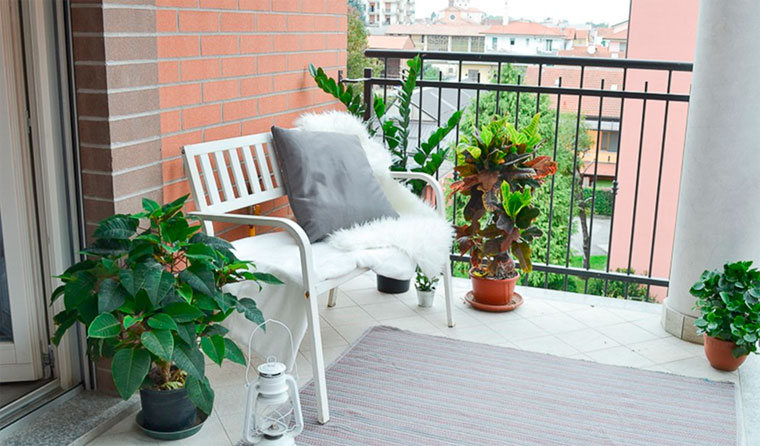Laminate for the hallway: which one to choose, with what to combine
Laminate as flooring for hallway Today confidently competes with tiled and linoleum. Despite the nit-picking of some skeptics, this is a fairly good and durable coating - only important choose the right option of all offered in the market. Of course, not all types of coatings can withstand dirt from shoes, melting snow, scratches from sand and sledges. We’ll try to determine which laminate to choose for the hallway, and what qualities it should have.
The structure of the laminate and its properties
In order not to be unsubstantiated in listing the advantages and disadvantages of a material, it is better to turn to its structure, and then it will become clear what the basic properties of the laminate are. The laminate plate consists of several layers:
- MDF or particleboard - the main layer. The stiffness and strength of the plates may vary and depend on the amount of wood in their composition. The higher this indicator, the higher the reliability and moisture resistance;
- decorative layer fully determines the appearance of the material. This is a thick paper on which a drawing of any type of wood, stone, ceramic tile, etc. can be printed;
- top protective layermade on the basis of melamine or acrylic resin. It provides protection against abrasion, sunlight and moisture. Some types of laminate have several layers of protection, which increases their durability. Often, manufacturers add various substances to this layer to improve performance: for example, to increase strength add silicon dioxide, cellulose fibers or corundum;
- bottom layer made of heavy kraft paper. Its function is to protect the stove from high humidity.
The plates have a thickness of 7-12 mm, a width of 20-25 cm and a length of 1-2.5 m. Laminate features such advantages as strength, reliability, ease of installation and maintenance, excellent decorative qualities and reasonable price. Among the minuses are usually called low durability and moisture resistance, but thanks to modern technologies, manufacturers have learned to make moisture resistant laminate with increased strength and durability. It is he who is suitable for the hallway.
Laminate flooring performance
Wear resistance
This is the first parameter that you need to pay attention to when choosing. Since bypassing the entrance hall, it is impossible to enter the apartment, the load on its floor covering will be very high. Accordingly, it is necessary to choose a laminate that is as resistant as possible to loads, especially point ones.
By wear resistance, the laminate is divided into several classes, which are determined after testing. It consists in a circular scratching of the material: the longer the laminate remains intact, the stronger it is. Wear resistance class is written in two digits: one means the recommended class of the room, the second - the degree of load on it. For instance, class 23 it is intended for premises with a high degree of loading and can quite be used in hallways, but class 32 and 33 laminate is much better - This is a laminate for commercial premises with medium and high degree of load, respectively.
Thickness
As already mentioned, the thickness of the laminate can vary from 7 to 12 mm. The strength of the castle is directly related to the thickness, and resistance to mechanical stress depends on this. Since they will often walk through the hall every day, it is better to choose a thicker material. Of course, it will cost more, but buying finer material, you risk in a few years again to repair and change the coating in the hallway.
Castle
Today, a laminate with such types of lock connection:
- Lock when laminate panels are driven in. Suitable only for horizontal laying;
- Click when the panels snap. This is one of the most reliable and durable options, especially since it will be possible to lay the laminate not only horizontally, but also in the L-shaped way.
Basically, a modern laminate is laid without glue. This is additional simplicity during installation and excellent maintainability, because in which case it is enough to change the damaged board, and the floor covering again, like new.
However, still in use adhesive option for laying laminate. This is not only an additional expense for glue, but also the ability to use a water-repellent adhesive to protect the most dangerous place - the joints of panels. The main disadvantage of this method is that if one board is damaged, it will not work to change it, it will be necessary to dismantle the entire coating.
Moisture resistant or waterproof?
Everyone agrees that it’s better to use a hallway moisture resistant laminate, which can appear here quite often, because during rain and snow it is brought along with shoes, clothes and umbrellas, and if there are also pets in the house, then its number increases. So which laminate is better to choose - moisture-proof or waterproof?
Moisture resistant laminate characterized in that its ends are additionally treated with water-repellent compositions. Often, an external protective layer lends itself to such processing. The result is a material that can be washed using household chemicals, and which withstands moisture for some time, but it is better to remove puddles from it without delay. For panel joints, it is better to use water-repellent adhesives, because this is the most vulnerable spot. This is a good option for the hallway, which will provide the flooring with sufficient durability, even in the specific conditions of this room.
For those who want to get the most durable and water-resistant material, a new type of material was developed - water resistant. Thanks to new production technologies, fantastic results were achieved. Such material does not just withstand the accumulation of water on the surface - if the panels are lowered into the water for a day, it will not swell and will not change its appearance. For this, of course, you have to pay, and such a laminate costs twice as much as moisture resistant. But it can be used with tranquility not only in the hallway, but also in the kitchen and even in the bathroom.
Decorative qualities and practicality
Laminate, offered to us today by a huge number of manufacturers, It differs not only in color and pattern, but in the type of surface and method of its production.. This largely determines how practical, convenient and beautiful the coating will be.
Laminate is usually divided into the following types:
- with a smooth coating. This is not the most suitable option for hallways, and if the surface is also glossy, then traces will remain on it, and with the slightest wetness the floor will turn into a skating rink;
- with a matte finish. Such a laminate more naturally repeats the surface of the wood, it is not so slippery and there are less traces on it, but still for the hallways the option is not the best, especially if many people pass through it;
- a laminate with chamfers is not only very similar to natural wood, but also has a high practicality;
- texture laminate is the best option for hallways.Firstly, the surface of the tree is completely imitated, and the resemblance to a massive board is striking, and secondly, the surface is non-slip and non-marking.
To give the laminate wood texture several methods are used:
- embossing. A thicker protective layer is applied to the laminate, then it is pressed through to form a characteristic texture. This is additional strength, and the coating will have to be washed less often;
- stamping in the register. Here, the relief differs not only in the protective layer, but also in the decoration pattern. It looks even more impressive;
- brushing consists not only in embossing, but also in staining the grooves, after which another protective layer is coated. Such a material is great for hallways, because it gets additional strength and abrasion resistance;
- "Chrome zone". A chrome alloy is used to decorate the grooves, which allows the laminate to acquire useful performance and a spectacular appearance.
As for shades, patterns and textures, then here the choice is behind each of us, but there is plenty to choose from. It can be a monophonic coating, imitation of wood, natural stone or even tile. All these options look equally impressive, it remains only to decide what will fit better into the interior of the hallway.
Common sense suggests that for a hallway, which is often devoid of a natural light source, it is better to choose a light laminate. By the way, it can be laid diagonally, which allows you to visually expand the space.
Combining laminate with tile
For those who are still afraid to use the laminate, there is a compromise option - combine it with other materials. At the threshold you can use ceramic tile or porcelain tile, which will take on the main blow. The rest of the hallway can be finished with laminate to give comfort to the room. Moreover, in this case, you can choose a laminate with not the highest performance, because the impact on it will be minimal.
Using this combination is easy zoned hallway space, clearly highlighting the place where you need to take off your shoes. For too long hallways, this is a great way to make the space more harmonious. The tile and the laminate should be combined with each other, but the border between the coatings should be clearly visible, so using identical shades is not recommended.
The transition between the zones can be made direct, diagonal, curved or wavy - it all depends on your own desires and the style of the interior. Some people prefer to raise the area near the threshold, making a mini-podium. This allows you to more clearly divide the zones, but most importantly, do not get carried away and do not make the podium above 3 cm.
Finally
Thanks to the rapid development of technology laminate flooring today, without exaggeration, can be called an excellent option for hallways. If you do not save and choose a material with suitable abrasion and water resistance properties, then you will be able to decorate the entrance hall with a beautiful strong and durable coating that brings comfort and withstands all possible negative influences.



